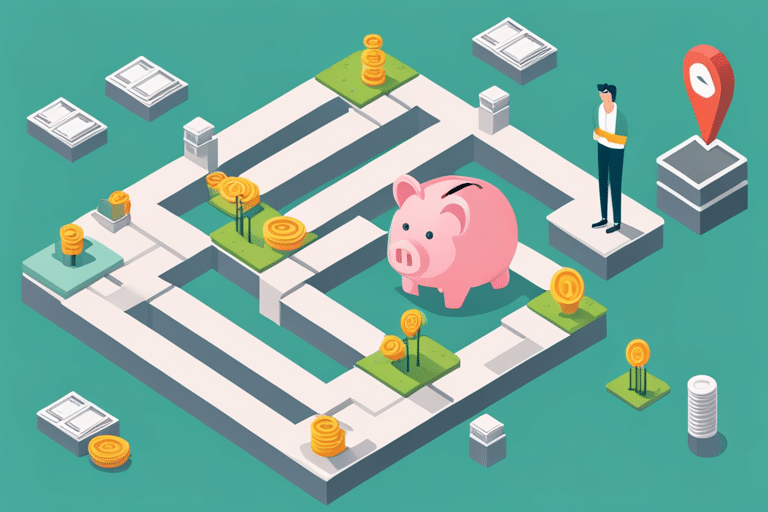Are you tired of the never-ending cycle of credit card debt? Well, buckle up because we’ve got the solution you’ve been waiting for!
In this article, we’re going to show you how to break free from that pesky debt once and for all. No more endless payments and mounting interest rates.
It’s time to take control of your finances and start living a debt-free life. Get ready to master the art of breaking the cycle of credit card debt!
Key Takeaways
- Instant gratification can lead to a cycle of credit card debt, with long-term consequences such as high interest rates, fees, and a damaged credit score.
- Assessing your current financial situation and identifying unnecessary expenses is crucial in breaking the cycle of credit card debt.
- Creating a budget and cutting expenses by prioritizing needs over wants can help save money and reduce debt.
- Developing a debt repayment strategy, such as using the snowball or avalanche method, and considering balance transfer or increasing income through side hustles, can be effective in breaking the cycle of credit card debt.
Understanding the Impact of Credit Card Debt

You need to understand the impact of credit card debt in order to break the cycle once and for all.
So, let’s dive into the fascinating world of credit card psychology! Did you know that our brains are wired to prefer instant gratification over long-term consequences? It’s true!
Credit cards play right into this by offering us a way to buy now and worry about paying later. But what many people fail to realize is that those purchases can quickly add up, leading to a never-ending cycle of debt.
And let me tell you, the long-term consequences are not pretty. Interest rates can skyrocket, fees pile up, and your credit score takes a major hit. Yikes!
Now that you understand how credit card debt works against you, it’s time to assess your current financial situation…
Assessing Your Current Financial Situation

Assessing your current financial situation can help determine the best approach to manage your credit card debt. It’s time to put on your financial detective hat and dive into the nitty-gritty of your spending habits. Here are four steps to get you started:
-
Evaluate Your Spending: Take a good look at where your hard-earned money is going. Are there any unnecessary expenses that could be cut back? Maybe it’s time to say goodbye to that daily gourmet coffee or those impulse online shopping sprees.
-
Identify Financial Goals: What do you want to achieve financially? Is it saving for a dream vacation, paying off student loans, or buying a home? Having clear goals will motivate you to make smarter choices with your money.
-
Track Your Income and Expenses: Keep tabs on every dollar that comes in and goes out. Creating a budget will help you see where you might be overspending and where opportunities for savings lie.
-
Seek Professional Advice: If navigating your finances feels overwhelming, don’t hesitate to reach out for expert guidance from a financial advisor or credit counselor. They can provide personalized strategies and support tailored to your unique situation.
Creating a Budget and Cutting Expenses

To effectively manage your finances, start by creating a budget that allows you to identify areas where expenses can be reduced. Think of it as a treasure map leading you to financial freedom!
Now, let’s talk about prioritizing needs vs. wants. It’s easy to fall into the trap of splurging on things we want, but do we really need them? Take a moment to analyze your spending habits and determine what is essential for your well-being versus what is just a fleeting desire.
Once you’ve identified your needs, it’s time to get creative and find alternative ways to save money. Maybe instead of dining out every night, you could try cooking at home or packing lunch for work. By making these small changes, you’ll be amazed at how much extra cash can pile up in your bank account!
Developing a Debt Repayment Strategy

Now that you have created a budget and identified areas to cut expenses, it’s time to develop a strategy for repaying your debt. Don’t worry, breaking free from the clutches of debt is totally doable! So grab your cape and get ready to conquer those credit card balances with these awesome debt repayment strategies:
-
Snowball Method: Start by paying off the smallest debts first, then work your way up. This will give you small victories along the way, keeping you motivated like a superhero on a mission.
-
Avalanche Technique: Attack high-interest debts first! By focusing on those pesky high rates, you’ll save more money in the long run and defeat those financial villains.
-
Balance Transfer Magic: Consider transferring your high-interest credit card balances to one with lower or zero interest for a limited time. It’s like using a magic spell to freeze interest charges!
-
Side Hustle Hero: Boost your income by finding a side hustle or turning your passion into profit. Every extra dollar earned can go towards defeating that debt monster!
Utilizing Balance Transfer and Consolidation Options

So, you’ve decided to tackle your credit card debt head-on, and that’s awesome! Now, it’s time to explore the world of balance transfers and consolidation options.
Are you ready for the pros and cons?
We’ll also dive into the best methods for consolidating your debt, so get ready to make some smart financial moves!
Pros and Cons
One thing to consider when evaluating the pros and cons of different debt repayment strategies is the potential impact on your credit score. While there are various effective strategies out there, it’s important to weigh the benefits and drawbacks before making a decision.
Here are four factors to keep in mind:
-
Prosperous Progress: Certain repayment strategies can help you make significant progress in paying off your debt, allowing you to see the light at the end of the tunnel.
-
Credit Conundrum: On the flip side, some strategies may have a temporary negative impact on your credit score, which could affect future borrowing opportunities.
-
Financial Freedom: Implementing an effective strategy can bring you closer to financial freedom by reducing your overall debt burden and providing peace of mind.
-
Budget Bliss: By choosing a smart debt repayment strategy, you can align it with your budget, ensuring that you have enough funds for other essential expenses.
Best Consolidation Methods
When considering the best consolidation methods, you’ll want to evaluate their effectiveness in reducing your overall debt burden. It’s like choosing the perfect dance partner to waltz your way out of debt! Take a look at this handy table below that showcases some popular debt consolidation options:
| Method | Description |
|---|---|
| Balance Transfer | Moving high-interest credit card balances to a new card with a low or 0% introductory APR. |
| Debt Consolidation Loan | Taking out a loan to pay off multiple debts and then making one monthly payment towards the loan. |
| Debt Management Plan | Working with a credit counseling agency to negotiate lower interest rates and create a repayment plan. |
Now that you have an idea of these different methods, it’s time to choose the one that suits your financial goals and needs. But remember, consolidating your debts is just one step towards achieving financial freedom. Let’s dive into building healthy financial habits for the future!
*[APR]: Annual Percentage Rate
Building Healthy Financial Habits for the Future

Hey there, money master!
Ready to level up your financial game?
We’re diving into some key points that’ll help you achieve ultimate financial stability:
- Budgeting like a boss
- Saving for those unexpected emergencies
- Managing debt like a pro
Get ready to take control of your finances and secure a brighter future – let’s do this!
Budgeting for Financial Stability
Creating a monthly budget is essential for achieving financial stability and breaking the cycle of credit card debt. It may sound boring, but trust me, it’s like giving your money superpowers!
Here are four reasons why tracking expenses and setting financial goals will change your life:
-
Empowerment: When you know where every dollar goes, you feel in control. No more guessing if you can afford that latte or not!
-
Prioritization: Setting financial goals helps you focus on what really matters. Want to save for that dream vacation? Budgeting will make it happen.
-
Eliminating Surprises: By tracking expenses, you’ll uncover any sneaky spending habits or unnecessary charges that drain your wallet faster than Usain Bolt runs.
-
Peace of Mind: Knowing exactly how much money is coming in and going out brings a sense of calmness to your life. Financial stability awaits!
Saving for Emergencies
Setting aside money for unexpected emergencies is crucial for financial stability and peace of mind. Life has a funny way of throwing curveballs at us when we least expect it. That’s why having an emergency fund is like having a superhero cape tucked away in your closet. It’s there to save the day when you need it most.
But how do you start saving for emergencies? Well, here are some nifty saving strategies that will have you feeling like a financial wizard in no time.
First, set a specific goal for your emergency fund – whether it’s three months’ worth of expenses or more. Then, make saving automatic by setting up regular transfers from your checking account to your emergency fund. And remember, even small contributions add up over time!
Managing Debt Effectively
Hey there, money master! You’ve learned how to save for emergencies, and now you’re ready to tackle the next step in breaking the cycle of credit card debt. It’s time to manage your debt effectively and take control of your financial future.
Here are four game-changing strategies:
-
Debt Consolidation: This nifty trick allows you to combine all your high-interest debts into one manageable loan. It simplifies your payments and can even lower your interest rate.
-
Credit Counseling: Don’t worry, this isn’t therapy for your credit score! Credit counseling is a helpful service that provides guidance on budgeting, money management, and creating a personalized plan to get out of debt.
-
Create a Debt Repayment Plan: Map out a strategy to pay off each debt systematically, starting with either the smallest balance or highest interest rate – whichever motivates you more!
-
Avoid New Debt: Break free from the vicious cycle by resisting the urge to rack up new credit card charges. Focus on living within your means and building healthy financial habits.
With these tools in hand, you’ll be well on your way to conquering that pesky credit card debt once and for all! Keep up the awesome work!
Frequently Asked Questions
Is It Possible to Negotiate With Credit Card Companies to Lower Interest Rates or Waive Fees?
You can totally negotiate with credit card companies to lower interest rates or waive fees! There are plenty of options and alternatives available that can help you break the cycle of credit card debt.
How Long Does It Typically Take to Pay off Credit Card Debt?
On average, it takes a while to pay off credit card debt. But fear not! There are sneaky ways to speed up the process. Let’s dive into some effective strategies for banishing that pesky debt.
Are There Any Government Programs or Resources Available to Help Individuals With Credit Card Debt?
You know, there’s this interesting thing about government assistance. It’s like finding a hidden treasure chest on a deserted island. Debt consolidation programs are the key to unlocking it!
What Are the Potential Consequences of Not Paying off Credit Card Debt?
Not paying off credit card debt can lead to bankruptcy and a barrage of collection calls. It’s like being caught in quicksand, sinking deeper into financial trouble. Time to break free and take control!
Can Credit Card Debt Affect My Credit Score Even if I Make the Minimum Monthly Payments?
Making only minimum payments on your credit card debt may have an impact on your credit score. It’s like trying to douse a fire with a teaspoon of water – not very effective in the long run!
Conclusion
Congratulations! You’ve reached the end of this guide on how to break the cycle of credit card debt once and for all.
You’ve gained useful insights into understanding the impact of debt, assessing your financial situation, creating a budget, and developing a repayment strategy.
Don’t forget about utilizing balance transfer and consolidation options to make things easier.
Lastly, remember to build healthy financial habits for a brighter future!
So go ahead, spread your wings and soar towards a debt-free life. You got this!

